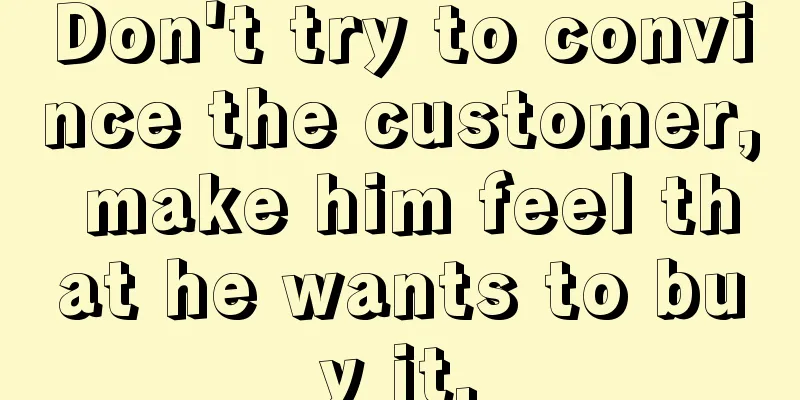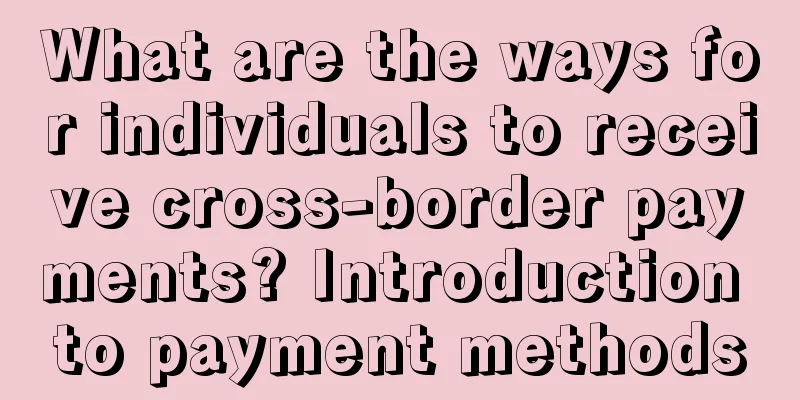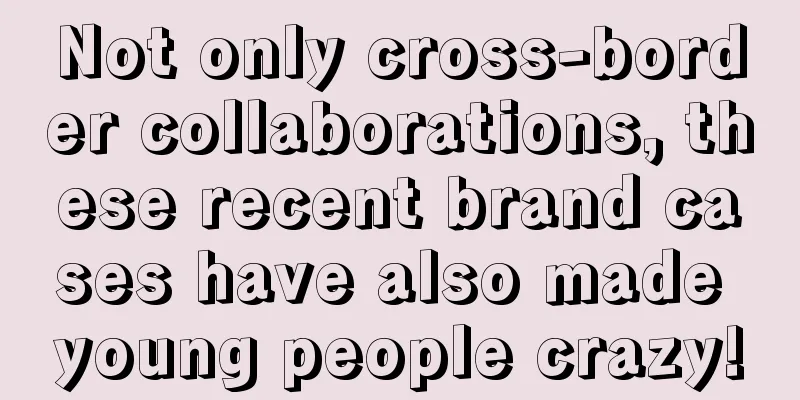Don't try to convince the customer, make him feel that he wants to buy it.

How do you get customers to make sales on their own initiative? When I say “make sales”, I mean more than just selling products and services, but also getting customers, HR, investors, etc. Its application range is actually very wide. If you want to raise funds, how do you get investors to invest a large sum of money? If you want to report a project and apply for a large budget, how do you convince your boss? If you want to find a job now, how do you convince HR and get a high salary? A very important principle is: you have to find ways to activate the ideas in the customer's mind and make him take the initiative to make a deal with you, rather than forcing you to sell him something. This may sound a bit weird, let me explain it slowly. You are awesome, but what does that have to do with me? People are only willing to buy "what they want to buy". First, let’s talk about some wrong sales patterns. I have consulted with some leading online video platforms. At that time, I came to a common conclusion with the sales staff of the platforms: the way the platforms recommended some projects was very contrary to the purchasing logic of customers. They often launch a big drama to attract investment, such as "Three Lives Three Worlds Ten Miles of Peach Blossoms". The investment PPT is written like this:
I think this is a typical sales method that customers don't like. Because "You are awesome, but what does it have to do with me? Why should I recognize you and cooperate with you?" Think about it, is your company also selling projects in this way? For example, when we in the advertising industry promote our company, we often say that our company serves top clients, such as Coca-Cola, McDonald's, and Procter & Gamble; what awards we have won, such as One Show, Golden Investment Awards, and Effie; how many platforms we have become agents of... What is the customer feedback in response to such sales promotion? He will immediately examine your project and your company like he is interrogating a criminal. They will ask a lot of tricky questions. For example, you said that the director of your drama is very good. As far as I know, he has always been shooting modern dramas. Now he is shooting this costume drama. Will his first crossover be successful? Then, he questioned the star. The star's reputation may have collapsed recently. Will it be dangerous when the drama is launched? If our brand is implanted in this drama, will it be criticized by public relations? As a salesperson, you start to explain the matter and refute all the comments that are not in your favor. Then, the customer will raise more issues that he thinks are problematic. You and I go back and forth, and you find that both sides seem to be debating instead of discussing a business. Why does this happen? Because when we actively promote something, we actually put a lot of pressure on the customer. You trigger a defense mechanism in him. He feels that you are controlling him. He wants to break free from this control, so he starts to find fault. His behavior is not that he does not recognize your company, your products, or your services. He just does not want to be controlled by others. You see, when we try to force a sale and impose our own ideas on customers, it will provoke a "psychological resistance" reaction from customers. The key to solving this problem is that you should not let the user feel that you are selling him something. Customers do not like to buy anything under pressure. Anyone is only willing to buy what he wants to buy, not what you want him to buy. I repeat this sentence again, anyone will only buy what he wants to buy, not what you want him to buy. A truly good sales model is to stimulate the transaction idea in the customer's mind, making him feel that this transaction is what he wants to do, rather than that he is forced by you to trade with you. It may sound a little unbelievable, but is there such a way? Is there such a perfect way? In fact, it is very common in life. For example, some big-name shoes often have limited editions, telling you that there are only a few pairs of this style in the world; top brands will do this even more, such as this bag, which has about 500 pairs in the world. What is the first reaction of many people when they hear this news? "It's limited edition worldwide, there's only one bag in this region, I must find a way to get it." You see, it stimulates your desire to buy it actively. There is another interesting experiment. If you take out a piece of white paper and fold it into a paper crane, and go to the street to sell it, and if you ask people on the street how much this paper crane is worth, most people will say that this paper crane is worth nothing. But if you change the way you do it and tell passersby that you can fold this piece of white paper into a paper crane, and then you set a price for this paper crane, how much do you think people will pay for it? This time, the situation changes, and most people will set a relatively high price for this paper crane. What does this example illustrate? This shows that people will only firmly believe in their own inner thoughts. They will resist ideas imposed on them from outside. They will look at the matter from a very objective perspective. However, when the person personally participates in the matter and feels that it comes from his heart, he will elevate the value of the matter. This gives us a lot of inspiration, that is, when we sell something, we must make the other party feel that he wants to trade with us. This is the main theme of our discussion today, how to stimulate the other party's trading ideas? Today I will tell you the six steps to activate proactive trading ideas, including identity alignment, loading certainty, implanting preset information, novel packaging, invisible boundaries, and consistent personality. 01 Identity alignment, equal dialogue opportunitiesFirst, let’s talk about the first technique, which is called identity alignment. The first problem we face when doing a deal is whether you can make the other party feel that you are qualified to talk to him. When the other party feels that you are not qualified, he will refuse to talk to you. Therefore, the first step in making a deal is to attract the other party's attention and make him patiently stop and talk to you. The biggest mistake in attracting someone's attention is to use connections. For example, Mr. Wang, your daughter seems to be studying abroad in Los Angeles. Does she also like basketball? My cousin is also in Los Angeles. He has two tickets to the Lakers. I will give you one so that he and your daughter can go to the game together. For example, has your child had any problems recently? I know the principal of that kindergarten. I will help you deal with it. Are you also from Henan? I am also from Henan. Where is my hometown? Where is your hometown? This is a typical way of climbing up the social ladder. Climbing up the social ladder can indeed attract the other party's attention and make him choose to talk to you for a while, but this does not work. The reason why this does not work is that although you have attracted the other party's attention, you have not gained the other party's professional recognition. This is a very dog-licking way. This person may think that you are worth talking to, but you are not qualified to deal with his problems, and in the end, the business will not fall into your hands. What is the right way? The author calls the right way identity code. Simply put, you speak industry jargon, or you tell him the industry's code, so that he feels that you are a member of this circle and you are qualified to discuss this topic with him on an equal footing. Let me give you a particularly interesting example. One day, Oren Kraf drove his car to a high-end party. The car was worth several million dollars and was very expensive. When he arrived at the party venue, the doorman stopped his car and said, "Sir, give me the car keys and I'll park the car for you." He was a little hesitant because his car was very expensive and he didn't trust the doorman. But the doorman's next words completely dispelled his concerns. He said, "I'm curious, sir, do you use Weber sensors and American fuel pumps in your car? Because judging from the sound, you should use forged pistons and lithium-made connecting rods." The doorman used a lot of terms that we couldn't understand, and only professional car enthusiasts could understand what he meant. But when he finished speaking, Oren Kraf immediately felt relieved, thinking that this was a person who knew cars very well, and then happily gave the car keys to the doorman. There is a huge gap between the identities of the doorman and the author, and it is particularly similar to situations we would encounter in real life. For example, if you are a salesperson and you want to sell your insurance to a billionaire, your status is actually not equal. But if you can give some very professional financial advice from his perspective, you are equal in terms of professionalism. So, when we are negotiating a deal, we must first align our status and make others feel that you are qualified to talk to the other party. The specific method is that you have to speak some industry jargon and industry secrets to make him feel that you can handle his problems. However, it is not enough to just say a few industry jargons and align identities. Because the other party only recognizes you temporarily, his concerns about you and your business are still not dispelled. So the second step is very critical, which is called loading certainty. 02 Loading certainty, eliminating uncertainty between transactions and delivery, and gaining trustThere are a lot of uncertainties between transactions and delivery, which means "transactions are risky". Everyone will worry about this and that before a deal is made, wondering if there are any pitfalls in this deal that I haven't thought of. A mediocre salesperson will provide more information to his potential buyers. For example, when some advertising companies encounter a client who does not trust them, they will start talking about the awards they have won and the similar clients they have served. After talking a lot, the end result is that the client may be impressed, but he may also be more confused. In fact, you don’t need to tell the other party more information to reassure them, but to tell them less and more professional information so that they feel that your company and you as a person may be the most authoritative in this field, and make them feel that this business deal has a very strong certainty. The author proposed a method called "flash professional skills". It is to show professional skills in a very short time, about 90 seconds, so that the other party will feel shocked, and this can fill the gap of uncertainty. For example, if you think your brakes are not working and your transmission is broken, and you go to repair your mountain bike, the mechanic will take one look and tell you: "The lever at the point where the gear is inserted at the junction of this guard and the main chain is broken, so every time this wheel turns toward the center, the pressure on the cloth plate is too great, and then the rear edge rubs against the outer line of the transmission." He seemed to say a lot of things that we didn't quite understand, but as soon as he finished saying this, we would immediately agree and feel that this person could solve my problem. Why is it that the more you talk, the worse it gets, but the less you talk, the better it gets? Because he gives you the illusion that this problem, which seems serious to you, seems to be a commonplace thing to him, which gives you a great sense of security. When showing your professional skills, remember not to use words like "I doubt", "I think", "I feel". Instead, you should convey a very firm belief to the customer, as if you have experienced these things thousands of times, and his problem has never been a problem in your eyes, but just a routine operation. In this way, you will immediately gain his high trust. Let me tell you about my personal experience of taking my dog to the doctor. He had a disease called pyometra, which means that a lot of pus accumulated in his uterus and his stomach suddenly swelled up. When we arrived at the hospital, there was a doctor on night duty. After he examined him, he said, "I think it's pyometra." I asked, "Is this disease serious?" He said, "This disease is considered a common disease, but it cannot be said to be not serious at all. I suggest that we wait until our director comes back tomorrow and he will perform the surgery himself." After he expressed his doubts in his tone, I was very afraid to hand the dog to him. After I confirmed with him that the disease could be treated overnight, I decided not to have surgery or do anything else in this hospital. The next day, I went to the hospital I was very familiar with and often went to, and found a doctor I trusted very much. He diagnosed me like this: "Pyometra is a very common disease, similar to sterilizing a female dog, but it is a little more complicated, and the entire uterus has to be removed, but it is not a particularly complicated operation." Then he saw that I hesitated for a second, and added, "If it was my dog, I would have it operated on right now." His very confident tone naturally gained my trust, and I immediately asked the doctor to arrange the surgery. When we talk to clients about a professional topic, once we show any hesitation, whether it is objective hesitation or subjective uncertainty, it will make the client deeply doubt whether you can handle his problem. The key to loading certainty is that you should not say too much. In a very short period of time, you should convey your understanding of the problem and the solution to the problem with great certainty, so that the other party will feel that this matter is a piece of cake for you and that you have dealt with countless similar problems, thereby gaining his trust. 03 Implant preset information to establish customers’ sense of control over the transactionThe third step is to implant preset information in the customer's mind. There is a large information gap between buyers and sellers. The reason why he buys your service must be that he does not understand your industry. After all, if he knows your industry very well, he would have placed an order. When you convey some very professional information, the customer must not know it and he will be doubtful. The more you convey, the more confused he will be, so you must make him feel in control of the entire transaction in a very short time. How can you make him feel in control in a short period of time? You have to know that some information can be understood by him and is what he cares about most. As long as you explain this information clearly, he will have a sense of control over the entire transaction. What information do people pay special attention to in transactions, or even in their daily behavior? Psychologists have given some common answers. There are three types of information that people pay special attention to during the transaction process. As long as they are mentioned, the brain will react immediately, and people will even collect answers to this information unconsciously. The first type is called the danger information area, the second type is called the reward information area, and the third type is called the fairness information area. The dangerous information zone refers to situations where the outside world encounters many changes and risks, and the human brain will react subconsciously. We have lived from ancient times to the present, and the environment around us is full of uncertainty. For example, when ancient people walked on the road, a snake might jump out at any time, or a group of wolves might lurk in the distance, so people are always vigilant. Our genes are naturally very sensitive to danger. The return information area is where we judge whether the return is better or worse after the task is completed. For example, in a hunt, how many people must die to kill a wolf pack and get wolf meat? We need to naturally judge whether the cost-effectiveness of this investment return is reasonable. The third area that will be stimulated is the fair information area. When the wolf meat is brought back, how will the tribe distribute it? The chief takes the best lamb leg meat, some of the old, weak and disabled may get better treatment, how will the others be distributed? The fairness of this distribution will be considered. In transactions, customers will also subconsciously look for answers to these three information points: The first corresponds to the danger information area: What does your transaction have to do with me? What threats and dangers do I face? What actions must I take? The second corresponds to the return information area. What benefits does this bring to me? If I make this transaction and buy your product, what can I get? The third area corresponds to the fair information area. Why should I cooperate with you? What are your conditions? How do I know that I will get a fair transaction? Have you cheated me? Are you giving me the lowest price? In response to these concerns of customers, we need to find corresponding and specific solutions. Step 1: Winter is comingFor example, when a customer asks what does this deal have to do with us and why should I buy it, you need to describe the threats that exist in this environment for him. This method is called "Winter is Coming." If you have watched "Game of Thrones", you may know the meaning of "Winter is Coming", which means creating anxiety. He will not tell customers how good the product is, how low the price is, or how excellent my company is. His first step is always to describe the direction the industry is heading, what threats it faces, and what actions your competitors have taken, so that the buyer of the transaction feels that this thing must be done, otherwise it will be doomed. Step 2: Double Return PrincipleWhy is it the principle of double return? The result of an industry survey is that double is a very magical number. When you say that the effect of this thing can be increased by two times, the other party will immediately be alert, but if it is less than 2 times, the other party may remain indifferent. For example, if you want to stimulate American families to change cars, consumers will only consider it if the performance of the car you are promoting is improved by nearly 100%, but if the performance is only improved by 80%, consumers will be indifferent. So when you promise and hint at rewards to customers, it is best to have a double effect. Step 3: Risk SharingMost people may offer lower prices and more discounts to customers, thinking that this is fair, but this is actually wrong. When you sell your products and services at a low price without any bottom line, it will arouse the other party's suspicion and make them think that you are cheating me and that this thing is not that valuable. The correct approach is risk sharing. Simply put, you need to make him feel that you are both in the same boat and on the same boat. Let your opponent know that you have invested the best resources, the best team, and the most energy. If this project fails, you will fail with it. This is the right way to achieve this effect. Through the three steps of the coming of winter, the doubling effect, and risk sharing, a set of solutions is formed based on the preset information in the customer's original brain, giving him a definite conclusion, making him feel that he has fully understood the deal and is safe. Let me share with you an example of how Oren Kraft used these three tricks to help a genetic company founded by an elderly man win investment. When he received this request, he also felt it was difficult. First, the elderly man was really old and the investment amount required was not small. Second, the potential investors were very professional and had a whole team of analysts behind them. He first activated the other party's idea by using the coming of winter, that is, this genetic engineering would be applicable to many consumers in the future, making the other party feel that this transaction was necessary. He asked everyone, "Many of the analysts here are very young. I think you must have bought the best medical insurance with your salary?" The analysts said yes, we did. He then asked, "If you unfortunately get Alzheimer's disease now, what treatment would you use?" The other party was a little confused. He went on to say, "To be honest, there is no good treatment at all. There are many chronic diseases that cannot be cured. They require more cutting-edge technology and more cutting-edge gene research and development of drugs. So this matter is closely related to the future life of each of us." He used this example and Q&A to inspire everyone in the conference room to realize that this medicine and this service are a trend in the future. The second step is to make people feel that this matter has a very good effect. He asked the client he was representing, "Professor, how old are you this year?" The professor replied, "I am 71 years old this year, but the probability of me living to 90 is twice that of those present here." They had agreed on this beforehand, and the author then explained why it was twice that of those present here. The professor himself has undergone a lot of genetic testing, and the survival rate of his own genes and the probability of getting sick or seriously ill in the future are much lower than anyone else's. Some of his potential diseases have been intervened when he was a few years old, so his probability of living to 90 is twice that of those present here. When everyone heard the number twice, they were shocked again. The third step was to allow the old professor and all the investment analysts and investors present to form a risk-sharing relationship. He said: "Our company has been researching in this field for 15 years and has obtained 12 patents. We have 25 PhDs around the world helping us. It's not because our technology is so strong, but because our founder, this old professor, has invested all his earnings and savings in this Gene Code company. He has invested a total of 5.7 million US dollars here over the years." This is real data. When he said this data, it gave all potential investors an impression that this person has invested his life in this company. He must love this company very much and will live and die with this company. Although he is 71 years old now, he has a high probability of living to 90 years old, which is twice my probability. It is extremely safe for me to invest in him. After these three steps, the CFO came out of the conference room, looked at him in surprise and said, "I don't know what just happened. Everyone in the conference room voted unanimously that we should invest in him. This has never happened before!" We have discussed three methods: identity alignment, loading certainty, and preset information: Identity alignment: When you first contact a customer, you must use some identity codes and industry jargon to quickly make the customer feel that you are someone worth talking to. Load certainty: You need to quickly demonstrate your professional skills, make him feel that you are the most professional in this field, and gain his trust. Preset information: You need to provide clear answers through the information that the customer will pay attention to in his DNA, so that he feels that he has control over the entire transaction. How does this matter relate to me? What kind of return can I get? Will I be treated fairly for doing this? *The content is quoted from "Demand Awakening". |
<<: Marketing experts are all masters of psychology
>>: Brand No. 1: Dislocation + Open Space = Flanking Battle
Recommend
What is Shopee Ads Smart Bidding? How does Smart Bidding work?
Merchants who open stores on Shopee need to do a g...
How do Temu sellers set prices? How do Temu sellers set prices?
When running a temu store, product pricing is not ...
From 0 to 100 stores, how did Zuoting Youyuan use its private domain to attract 6 million members and dominate the Chaoniu hotpot market?
In the Internet era, all industries are accelerati...
What should foreign traders do if their RMB receipts are frozen? How to solve it?
Foreign trade merchants need to prepare a collecti...
Taobao and JD.com have also implemented refund-only policy, but is it really useful to learn from Pinduoduo?
Pinduoduo's "refund only" feature ha...
Where can I find Amazon's order defect rate? What is the order defect rate indicator?
Amazon's order defect rate is also a very impo...
Is suez cross-border e-commerce real? Is suez a cross-border e-commerce?
Compared with the saturated domestic e-commerce ma...
Douyin "dislikes" digital people
When digital human technology was first introduced...
How does a data analyst write a "useful" analysis report?
Many data analysts are trapped in the endless coll...
Can I open a personal store on Shopee? What are the conditions for opening a store?
Shopee is a well-known e-commerce platform that al...
ChatGPT is a global hit! What’s so special about it?
In the past two months, the most popular software ...
What is the normal daily ad exposure for Amazon ads? What are the promotion methods?
On Amazon, the global e-commerce giant, ad impress...
How to set up Amazon Prime exclusive discounts? What are the procedures?
After everyone opens a store on Amazon, in order t...
What kind of taxes do cross-border e-commerce businesses in Shenzhen need to pay? How are taxes calculated?
With the rapid development of China's cross-bo...
How much does it cost to start a cross-border e-commerce business? Introduction to the cost of cross-border e-commerce
The benefits of globalization have made many busin...









